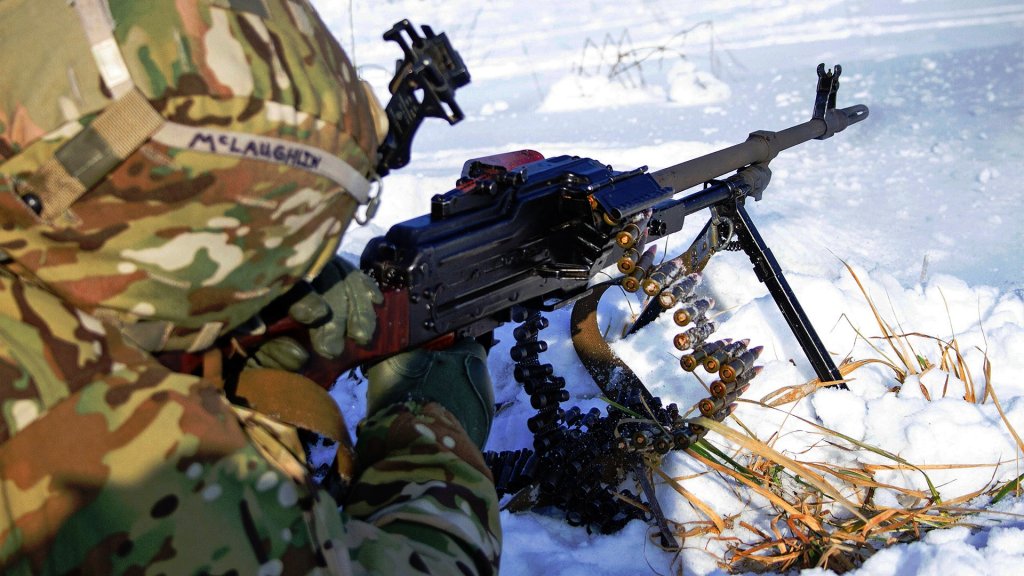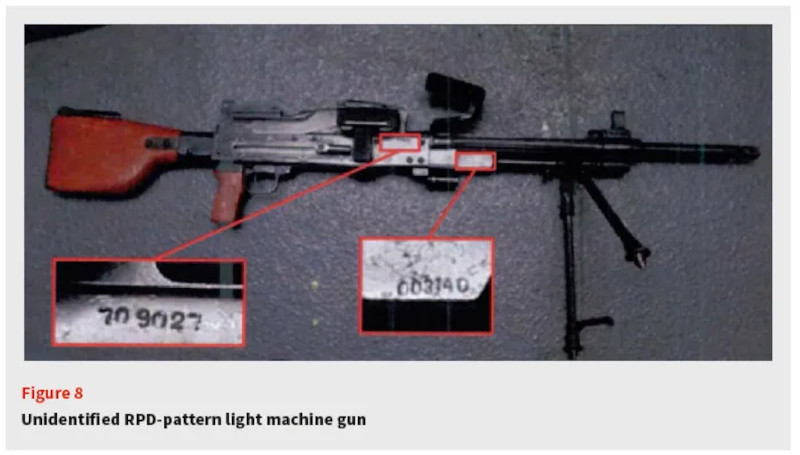The peculiar North Korean Type 73 machine gun is getting new attention as a result of the Hermit Kingdom’s expanding support for Russia’s war in Ukraine, which now includes the deployment of thousands of troops. The weapon, chambered in the Russian 7.62x54mmR cartridge, is a unique blending of Cold War Soviet and Czech designs.
Pictures showing Type 73s, which are said to have been taken in Russia’s Kursk region recently, first began circulating online yesterday. There are competing unconfirmed reports that North Korean troops may have brought the guns with them or that Pyongyang is supplying them as military aid to Russian forces. Russia is known to have received various weaponry from North Korea already, including KN-23 short-range ballistic missiles, Bulsae-4 anti-tank missile vehicles, and rocket-propelled grenades, along with millions of artillery round and various kinds of other ammunition.
Whatever the provenance of the images might be, they clearly show Type 73 machine guns, which are distinctive in a host of different ways. The North Korean gun combines design elements from at least three different machine guns: the Czech 7.62x39mm Vz. 52/57 machine gun and the Soviet 7.62x54mmR Soviet RP-46 (itself a belt-fed version of the Soviet DP family) and PK series.



What is most immediately notable about the roughly 22-pound (empty) and four-foot-long Type 73 is that it can feed from a top-mounted box magazine (like the Vz. 52/57) or a belt of ammunition loaded in from the right side (also like the Vz. 52/57, as well as the RP-46 and PK). When used with a box magazine, the gun has an especially archaic look reminiscent of designs dating back to even before World War II like the Czech ZB-26 and the British Bren. The Bren, as well as Vz. 52/57, were themselves derived from the ZB-26.
The Type 73’s unusual features also include a muzzle device that allows for the firing of rifle grenades. When that capability isn’t in use, a cover that includes a muzzle brake can be screwed onto the front end of the gun’s nearly two-foot-long barrel.

Believed to have entered North Korean service in 1973, hard details about the Type 73 and its development remain scant.
“Frankly, this is the result of… several of North Korea’s previous leaders, Kim Jong Il and Kim Il Sung, both being … like actually gun guys. And they were both big fans of Czechoslovakian firearms in particular,” firearms expert Ian McCollum, who runs the Forgotten Weapons website, said in a video on the Type 73 back in 2022, which you can watch in full below.

There is a certain logic behind the design. Ammunition belts can be cumbersome for units to carry during active operations or even localized patrols. A box magazine, while offering less immediate ammunition capacity, would help make the gun easier to handle on the move, including when firing from the shoulder. At 22 pounds empty, the Type 73 is just over two pounds heavier than a typical current-generation Russian PKM, but is substantially lighter than the U.S. Army’s standard 7.62x51mm M240B light machine gun, which tips the scales at nearly 28 pounds before a belt of ammunition is even loaded.
A top-mounted magazine also allows the gunner to get and stay lower to the ground while firing from a prone position without sacrificing capacity.
“So the concept here was you would carry this with a box magazine in it for any sort of immediate action that might be necessary, for example, on a patrol or something,” McCollum says in his 2022 video. “And then, if you got into a position where you actually had to be using the gun for sustained fire, that’s when you would instead start feeding it belts.”

Again, while information is limited, the Type 73 does not appear to have been overly popular in North Korean service.
“Frankly, the Czech 52/57 wasn’t really all that successful, either. The concept of belt or magazine dual-feed systems never really took off. As far as I can tell, it’s something that… sounded better on paper than it actually was in practice. And it turned out people just always wanted to go with the belts,” according to McCollum. “And so having the magazine feed was sort of an extraneous complication to the gun. It made them more expensive to manufacture. It gives you extra openings for dirt to get in other potential malfunctions and all that sort of stuff.”
By the 1980s, the North Koreans had developed a new Type 82 machine gun, which is a PK-series clone. The PK family has been and continues to be one of the most popular light machine gun designs globally. Variants of that design are in widespread service on both sides of the war in Ukraine.
“It seems that many Type 73s were moved to reserve or militia service, but nobody can be sure,” Dan Shea and Heebum Hong wrote in an article for Small Arms Defense Journal in 2013. “While it could sometimes be seen in 1970s propaganda and at military parades, from the early 1980s it’s been more and more difficult to see one in use.”

Before now, Type 73 has appeared outside of North Korea only in relatively small numbers and largely due to Iran, which acquired some number of the guns during the Iran-Iraq War in the 1980s. The guns have since shown up in the hands of Iranian proxies in Iraq, Syria, and Yemen, as well as with militant groups in Africa.

Between 2016 and 2017, Australian and French forces seized a number of Type 73s during maritime interdiction operations in and around the Arabian Sea. Some official and other expert sources at the time described them as being variants or derivatives of the Soviet RPD light machine gun design, underscoring just how rare they are to see outside of North Korea.

For Russian forces, an influx of any additional machine guns, especially ones that use a widely available ammunition type, could be something of a boon. The conflict in Ukraine has already seen both sides make use of older and ostensibly obsolete weapons, including machine guns dating back to World War II or before, to help bolster their arsenals.
If North Korean Type 73s are indeed being fielded to Russian units or are otherwise being actively used in Russia’s war against Ukraine, new details about the guns, including how the design performs in actual combat, may now start to emerge.
Contact the author: joe@twz.com
